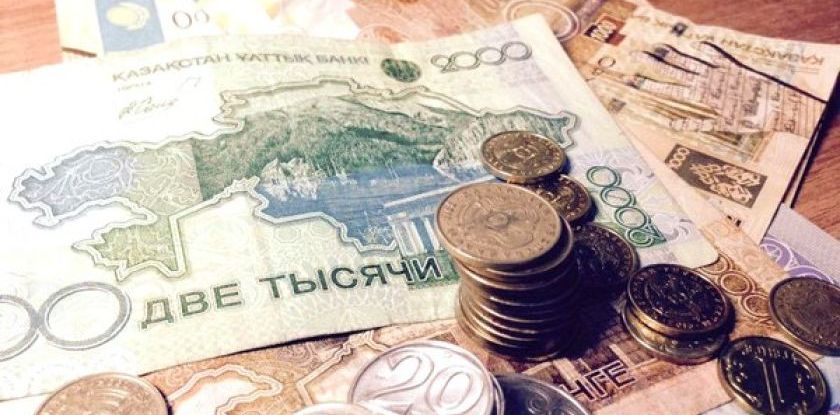The Kazakh authorities believe last year’s property legalization campaign was a success. However, to achieve it, the government had to rework drastically the initial conditions of it.
For instance, they prolonged the length of the campaign for a year and abolished the 10% legalized assets income tax. Besides, they simplified the mechanism of the applications proceedings and held a wide explanatory campaign for the masses.
Note that the Ministry of Finance restricted itself only to a publication of the legalization campaign results. However, it refrained from any analyses, at least, in the public info sphere.
Here is a citation from the Ministry of Finance’s official press release dated January 24, 2017 (words in bold taken from the original document).
“More than 140 thousand citizens had taken the advantage of this campaign. Overall, 5.7 billion tenges had been legalized (4.1 trillion in monetary assets and 1.6 trillion in physical assets).
They had legalized about 151 thousand real estate objects and 213 shares in legal entities.
11 821 accounts had been open for the monetary assets legalization.
They had legalized 5 trillion tenges worth internal assets and 700 billion tenges worth foreign assets (614 billion in monetary assets, 70 billion in physical assets).
Besides that, Bakhyt Sultanov’s* speech at the government session on January 10, 2017 contains some information on the legalization campaign results. To save time and space, here we present only the data not included in the press release.
“As we expected, during the past months, the legalization campaign has increased its speed dramatically. In the fourth quarter of 2016, they legalized 53% of the assets which confirms our estimates”.
“Here are the leaders of the campaign (general estimate) – Almaty (3 trillion 981 billion tenges), Astana (533 billion tenges), and the Almaty province (390 billion tenges)”.
“First, out of the 151 thousand legalized real estate objects, 9.5 thousand have been registered as commercial property. This increases the return of the property duties for about 800 million tenges per year”.
“1.9 trillion tenge continue to remain on bank accounts which provides an additional source for bank funding and economy financing. This means that these resources are distributed into different economy sectors through banks.
The citizens have withdrawn 2.2 trillion tenges of the legalized monetary assets from their bank accounts. These resources have also been used either for investments or for savings.
The 1.6 trillion tenges of the legalized real estate objects constitute potentially collateralized property for obtaining credits”.
Now, here is a short analysis of the property legalization based on the official information taken from the Ministry of Finance’s press release and from Bakhyt Sultanov’s speech.
- More than 140 thousand citizens had participated in the legalization campaign. It constitutes about 0.8% of the general Kazakh population. With the deduction of minors, it constitutes about 1.5%.
- Since the overall sum of the legalized monetary assets equals 4.1 trillion tenges and the overall number of opened bank account equals 11821, the average size of the assets legalized in such a manner equals 347 million tenges. The bulk of the monetary assets was legalized in 2016 (53% of the overall sum was legalized in the 4th quarter). This means that, in general, the campaign participants had each legalized about a million dollars.
- Since the overall sum of the legalized real estate objects equals 1.6 trillion tenges (including the 70 billion tenges outside Kazakhstan), we can see that, inside the country, the overall sum of the legalized real estate objects equals about 1.53 trillion tenges. In general, about 151 thousand real estate objects had been legalized. Thus, the average price for a legalized object equals only 10 million tenges.
- Out of the 4.1 trillion tenges of the legalized monetary assets, the 614 billion tenges were sitting on the offshore bank accounts. Thus, the remaining 3.5 trillion tenges on the bank accounts inside the country were cash deposits.
- At the start of 2017, out of the 4.1 trillion tenges of the legalized monetary assets, the 1.9 trillion tenges had remained on bank accounts and the 2.2 trillion tenges (more than a half, that is) had been withdrawn.
- These three regions (Almaty, Astana, and the Almaty Province) together account for 4.9 trillion tenges of the legalized assets which constitutes 86% of all the legalized assets in the country).
These calculations demonstrate that –
- The number of citizens with a “grey” income that exceeds their current expenditures is not at all a significant one (one person per every 50-60 adult Kazakhs)
- The clear majority of these citizens (about 90%) is, in fact, poor. This is confirmed by the fact that they had spent their hidden incomes on building residential properties and commercial real estate the average price of which equals only 10 million tenges.
- The number of the citizens with high grey incomes that had eventually been legalized by placing cash deposits on bank accounts is miniscule, about one person per thousand adult Kazakhs.
- The bulk of the hidden incomes is accumulated inside Kazakhstan (six sevenths, according to the results of the legalization campaign).
- Those participated in the campaign remain distrustful towards the government, the Kazakh banks, the law-enforcement agencies, and the judicial system. The fact that, at the start of 2017, right after the campaign had ended, more than a half of the legalized monetary assets were withdrawn from bank accounts.
- The Almaty region and Astana are the country’s financial centers, therefore, the number of those who can draw grey incomes is higher in these parts.
*Bakhyt Sultanov is Kazakhstan’s Minister of Finance




